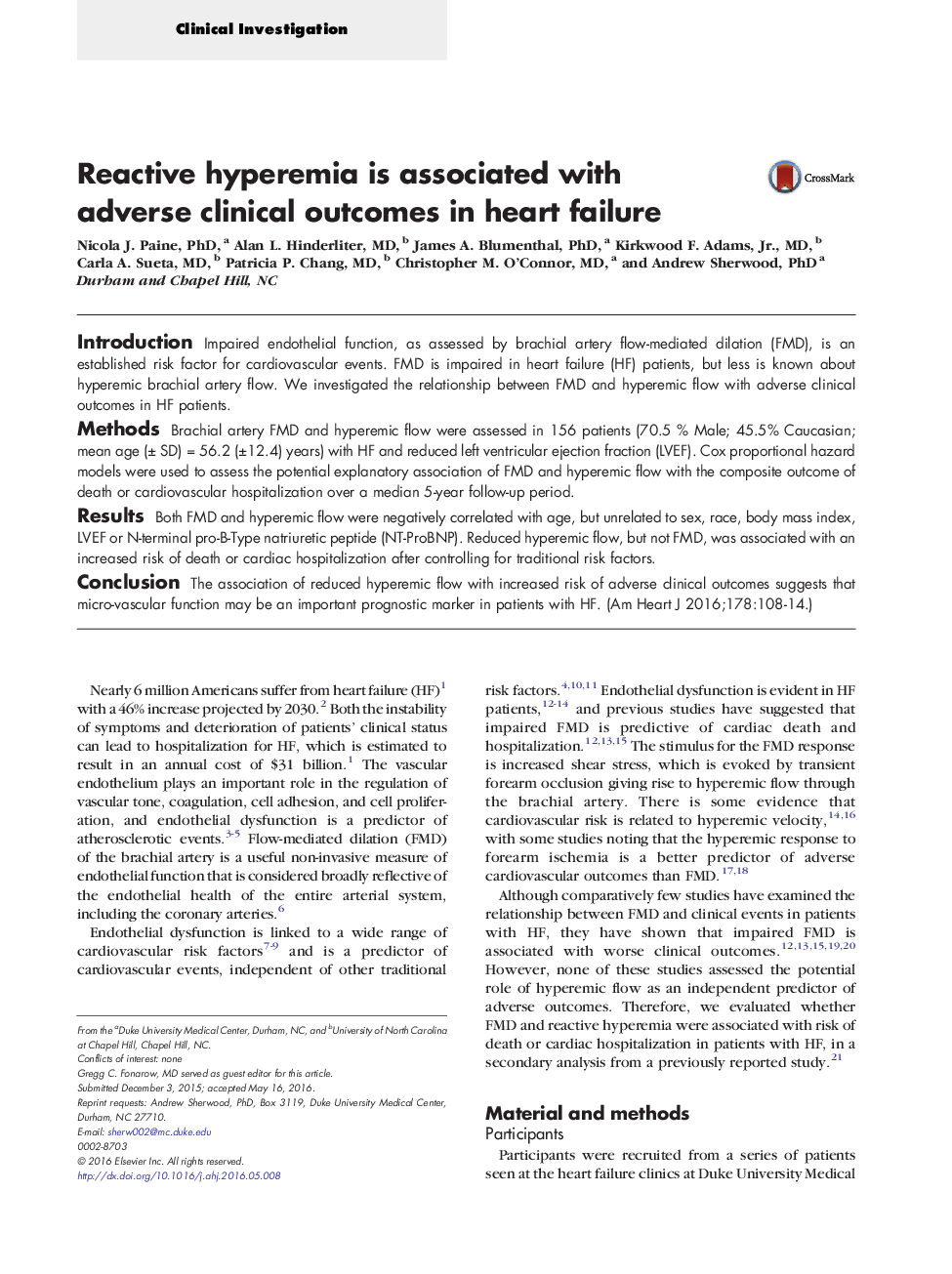| کد مقاله | کد نشریه | سال انتشار | مقاله انگلیسی | نسخه تمام متن |
|---|---|---|---|---|
| 5927841 | 1571437 | 2016 | 7 صفحه PDF | دانلود رایگان |
IntroductionImpaired endothelial function, as assessed by brachial artery flow-mediated dilation (FMD), is an established risk factor for cardiovascular events. FMD is impaired in heart failure (HF) patients, but less is known about hyperemic brachial artery flow. We investigated the relationship between FMD and hyperemic flow with adverse clinical outcomes in HF patients.MethodsBrachial artery FMD and hyperemic flow were assessed in 156 patients (70.5 % Male; 45.5% Caucasian; mean age (± SD) = 56.2 (±12.4) years) with HF and reduced left ventricular ejection fraction (LVEF). Cox proportional hazard models were used to assess the potential explanatory association of FMD and hyperemic flow with the composite outcome of death or cardiovascular hospitalization over a median 5-year follow-up period.ResultsBoth FMD and hyperemic flow were negatively correlated with age, but unrelated to sex, race, body mass index, LVEF or N-terminal pro-B-Type natriuretic peptide (NT-ProBNP). Reduced hyperemic flow, but not FMD, was associated with an increased risk of death or cardiac hospitalization after controlling for traditional risk factors.ConclusionThe association of reduced hyperemic flow with increased risk of adverse clinical outcomes suggests that micro-vascular function may be an important prognostic marker in patients with HF.
Journal: American Heart Journal - Volume 178, August 2016, Pages 108-114
